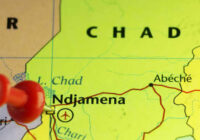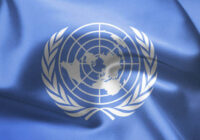Afghanistan’s young people face many challenges that need to be overcome in order to move the country forward.
On July 23, more than 120 passionate and determined young people from all over Afghanistan assembled to talk about their role in the future of their country. The Afghan Youth Parliament is a novel concept in a country where youth participation in politics is very low.
With the support of the Mashranu Jirga (upper house) of the national assembly of Afghanistan, the Deputy Ministry of Youth Affairs and the United Nations Population Fund (UNFPA), the enthusiastic young parliamentarians met over five days to discuss their active participation as future leaders and agents of change. This was their second gathering since the Youth Parliament was established in 2016. Senior government officials, foreign ambassadors and representatives from international organizations watched the event unfold in grandeur. The chief executive of Afghanistan, Abdullah Abdullah, along with the speaker of Mashranu Jirga, Fazal Hadi Muslimyaar, gave speeches about the importance of investing in Afghanistan’s young people.
The main theme of this gathering was to draw the government’s attention to the important issues facing the youth today, such as poor education and health systems, high instances of child marriage, mass unemployment and the dangerous and perilous journeys many young people undertake as refugees fleeing all these issues.
More than three decades of conflict in Afghanistan have left it with one of the youngest populations in the world, with 63% currently under the age of 25. With better education and job prospects, good health care and empowerment, young people can become a key demographic dividend: a large working population with few dependents, collectively bringing prosperity and peace to society. Sadly, this is not the reality in Afghanistan.
Evil Forces of Conflict
Youth plays an important role in the development of society. A young population is considered a valuable asset for a country’s socioeconomic and political development. In Afghanistan, unemployment and low levels of education have led to an increase in drug addiction among adolescents, early marriage and early pregnancy are widespread, and radicalization and extremism are a growing phenomenon. Rather than playing a positive and constructive role in the development of Afghan society, young people have become victims of the evil forces of conflict.
Investment in youth will yield fruits after they enter the workforce, where they will deliver several times the investment made on them. In the last 10 years, Afghanistan’s literacy rate has increased to around 38%, with thousands of schools and around 150 universities (both public and private) providing education opportunities. Thousands of graduates, within and outside Afghanistan, are ready to enter the workforce, but the lack of employment opportunities leads to a sense of desperation, prompting frustrated young people to take the decision to flee the country in hope of securing a better life. According to the World Bank, unemployment in 2013-14 was 39%, mostly affecting those aged between 14 and 24, who accounted for 46% of the total number of unemployed.
There is no concrete strategy or mechanism to solve the growing problem of youth unemployment. The Deputy Ministry of Youth Affairs, under the Ministry of Information and Culture, with the technical support of UNFPA and other stakeholders, have formulated several documents like the Afghanistan National Youth Policy, the Afghanistan State of Youth Report 2014 and Investing in Youth: How to Realize Afghanistan’s Demographic Dividend that present proposals aiming to address the challenges facing Afghanistan’s youth and find realistic solutions. These aim to design short, medium and long-term strategies and programs ensuring youth participation, skills development and providing the right track for their role in the development of the country.
For example, the government initiative to encourage investment in the country will not only create job opportunities in the short term, but will also work as a long-term solution by further securing the business environment. This shows that both the Afghan government and the international community recognize the vital role of the country’s youth in changing the future of Afghanistan for the better. But there is a long way to addressing the issues of youth in a systematic manner by channeling the adequate strategies.
Noor Murad, a youth specialist working for the UNFPA, had this to say about the role of young people as future leaders: “Youth are not only the future leaders but the main drivers of today’s development activities. Consequently, investment … [in] youth can accelerate economic growth and national development leading to peace. The aim of the Youth Parliament is to enrich them with knowledge and skills to be prepared for the responsibilities in the near future.”
Critical Stage
Afghanistan is passing through a critical stage following the withdrawal of allied forces. The current government is progressing well in terms of regional cooperation and attracting the attention of the international community. Afghanistan’s trade relationships with various regional countries have been settled, capitalizing on the important geostrategic position that has made the country a sought-after partner for centuries as a link between Asia, Europe and the Middle East.
However, the deteriorating security in Afghanistan’s provinces, mass unemployment, high levels of corruption, drug trafficking and a tense internal political atmosphere are all major challenges for the government. It should prioritize youth employment by attracting investment from the private sector. Returnees from Iran and Pakistan left their businesses behind and are now keen to invest in their country, but the opportunities are simply not there. These entrepreneurs require a secure business environment — a business plan addressing the challenges of land, electricity, machinery —and incentives from the government.
Investment in mining, energy, textile and agriculture sectors are some of the fields where employment will boost the economy and facilitate further employment opportunities. Moreover, the Afghan government can also consider employment schemes like providing loans for establishing small and medium-sized businesses. Merit-based recruitment, combating corruption and strengthening institutions will all give the youth of Afghanistan confidence in public institutions. Similarly, developing sports infrastructure throughout the country will not only provide a healthy physical and mental platform for the youngsters, but will also contribute to peace and national unity.
Furthermore, the government, with the help of religious leaders, should come up with an appropriate strategy addressing the misinterpretations of Islam. Mullahs, or religious scholars, are highly influential in Afghan society, and so religious gatherings and sermons during Friday prayers should be monitored to avoid misrepresentation of Islamic teachings that can lead to radicalization and extremism. There is a need to design and implement deradicalization programs in schools, universities, madrasas and prisons.
Early marriages for girls, along with high dowry payments and unaffordable wedding expenditures for boys, have led to the emergence of a serious financial gender gap, as well as gender-based violence across Afghan society. In 2015, parliament approved a law prohibiting dowry and restricting high expenditures on wedding ceremonies, but, in reality, little has been done to move the country past such traditional practices.
Due to the decreasing child and maternal mortality, reducing fertility rates and an increase in the life expectancy, the population trend is on a course to change dramatically in the next 40 to 50 years. It is predicted that there will be a significant increase in the elderly population, and so the government needs to design proper policies for elderly population, addressing their health care and social benefit systems.
Currently, Afghan youth are facing challenges in terms of insecurity, unemployment, corruption and lawlessness, but fleeing the country or joining militants is not the solution. It is now in the hands of young Afghans to take advantage of whatever opportunity they have. They should face the challenges by accepting the reality on the ground and work toward the development of their country.
*[This article was updated on September 25, 2017.]
The views expressed in this article are the author’s own and do not necessarily reflect Fair Observer’s editorial policy.
Photo Credit: Michal Knitl / Shutterstock.com
Support Fair Observer
We rely on your support for our independence, diversity and quality.
For more than 10 years, Fair Observer has been free, fair and independent. No billionaire owns us, no advertisers control us. We are a reader-supported nonprofit. Unlike many other publications, we keep our content free for readers regardless of where they live or whether they can afford to pay. We have no paywalls and no ads.
In the post-truth era of fake news, echo chambers and filter bubbles, we publish a plurality of perspectives from around the world. Anyone can publish with us, but everyone goes through a rigorous editorial process. So, you get fact-checked, well-reasoned content instead of noise.
We publish 2,500+ voices from 90+ countries. We also conduct education and training programs
on subjects ranging from digital media and journalism to writing and critical thinking. This
doesn’t come cheap. Servers, editors, trainers and web developers cost
money.
Please consider supporting us on a regular basis as a recurring donor or a
sustaining member.
Will you support FO’s journalism?
We rely on your support for our independence, diversity and quality.







